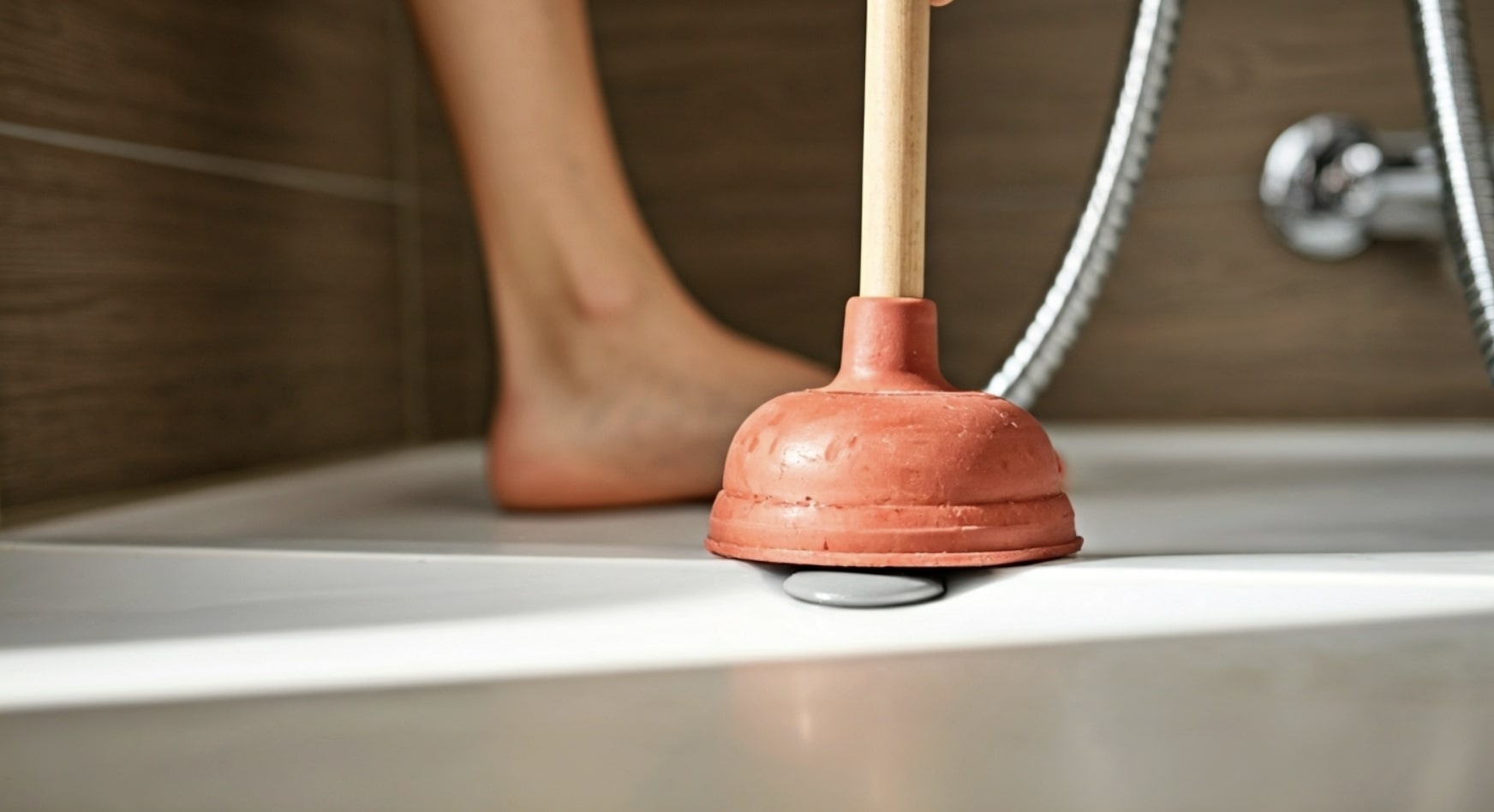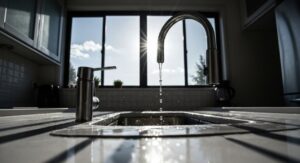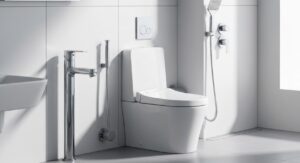Every homeowner eventually faces a clogged shower drain and bathtub issues. Not only does it disrupt your daily routine, but it can also lead to unpleasant odors and potential plumbing headaches caused by shower clogs. Instead of immediately reaching for harsh chemical cleaners, there are safer, effective alternatives you can try first. This blog will teach you how to unclog a shower drain naturally, using tools and household ingredients, while helping you recognize the root causes of drain clogs and keep your plumbing in top shape. Ready to restore your shower’s flow? Let’s get started.
What Causes Shower Drain Clogs?
You might be surprised at how easily everyday materials cause blockages. Hair is the leading culprit, as it tangles and traps other debris in the drain. Soap scum builds up alongside hair, creating a sticky mess that attracts more gunk.
Other offenders include grease from bath products, mineral deposits, and items like small toys or jewelry that accidentally slip past stoppers. Even the drain stoppers themselves can contribute if not cleaned regularly.
- Hair: Long strands and shaving residue collect quickly.
- Soap scum: This sticky buildup clings to pipe walls.
- Grease and oils: Bath products with oils cause slippery deposits.
- Debris: Dirt, sand, or accidental objects worsen the clog.
- Old or clogged stoppers: Block more than just hair.
“What are the most common causes of clogged shower drains?” The answer: a mix of hair, soap, grease, and everyday debris.
Signs Your Drain Is Clogged or Slowing Down
Don’t ignore the early warning signs of a clogged shower drain. One of the first things you’ll notice is slow drainage—water pooling at your feet instead of flowing smoothly away. Persistent, unpleasant odors may follow, often caused by trapped gunk and mold.
If you spot black residue or strange noises when water drains, you likely have a growing blockage. These symptoms indicate that your drain needs immediate attention to prevent further plumbing problems.
- Water drains slowly or pools in the tub.
- Unpleasant, persistent odors linger in the bathroom.
- Gurgling sounds or bubbling from the drain.
- Black gunk or mildew appears around the drain cover.
“How can I tell if my shower drain is becoming clogged?” Watch for slow drainage, odors, and visible residue as your first clues.
Essential Tools and Materials for Safe Unclogging
A well-equipped DIYer can handle most clogged shower drain issues with just a few basic tools. Start with a sturdy pair of pliers and a flathead screwdriver to remove the drain cover or grate. If you need to fish out hair and debris, a wire hanger bent into a hook works surprisingly well. Lastly, grab a flashlight to inspect deeper into the drain if needed.
For tougher clogs, invest in a plunger and a drain snake—both available at local hardware stores or online. These tools provide the mechanical power to break up and remove stubborn blockages without chemicals.
Here’s a helpful table for your toolkit:
| Tool | Use/Function | Where to Find |
|---|---|---|
| Screwdriver | Unscrew or pry up drain covers/grates | Hardware stores |
| Pliers | Remove stuck stoppers or grip debris | Hardware/DIY stores |
| Wire Hanger | Hook hair and debris near the drain opening | At home |
| Plunger | Create suction to clear simple clogs | Hardware/home stores |
| Drain Snake | Reach deep blockages and break up gunk | Hardware/home stores |
Getting these basics ready will make unclogging your shower drain a much smoother experience.
How to Use a Drain Snake Safely and Effectively
A drain snake, also called a plumber’s auger, is an effective tool for tackling stubborn shower drain clogs. Start by removing the drain cover with a screwdriver or pliers for clear access. Insert the snake gently until you feel resistance from the blockage.
- Turn the handle clockwise to catch hair and gunk, then push the snake further to break up the blockage.
- Once resistance lessens, twist the handle again before slowly pulling out the snake to remove the debris.
- Finish by running hot water to flush away any remaining residue.
Caution: Don’t use excessive force to avoid damaging the pipes. If you’re unsure, go slow and repeat the process for persistent clogs. Using a drain snake is a safe and eco-friendly solution—no harsh chemicals required.
Natural Methods to Unclog a Shower Drain
Whether your clog is mild or slightly stubborn, starting with these green solutions is always a smart move. What are the best natural or eco-friendly ways to unclog a shower drain? Let’s look at two proven methods in detail.
Boiling Water Technique for Mild Clogs
Using boiling water is one of the simplest eco-friendly tricks for mild shower drain clogs, especially if your pipes are metal. Bring a full kettle of water to a rolling boil and carefully pour it down the drain in stages.
- Don’t remove the drain cover for this method unless you need to.
- Pour slowly to avoid any splashing or burns.
- After the first round, wait a minute, then try a second pour if needed.
- Run the shower to see if water drains more freely.
This method helps dissolve soap scum, grease, and small debris. However, don’t use boiling water if you have PVC pipes, as it may cause damage. If odors or mildew persist after this step, it’s time to try a different natural remedy.
The Baking Soda and Vinegar Solution (Step by Step)
A natural remedy for addressing clogged shower drains involves using baking soda and vinegar. Begin by clearing any visible debris from the drain grate. Next, pour a generous cup of baking soda into the drain, followed by an equal amount of vinegar. This mixture will react, creating fizzing action that helps dislodge buildup. Allow it to sit for at least 30 minutes, then flush with hot water from a kettle. This DIY solution effectively breaks down gunk without harsh bleaches or chemical cleaners.
Trust Target Plumbers for Dependable Plumbing Solutions!
Sometimes, even the best DIY efforts can’t solve a persistent shower drain clog. That’s when you need a trustworthy plumber on your side. At Target Plumbers, we’re committed to providing reliable, professional plumbing services for all your drain and shower needs.
Our team uses specialized tools and proven techniques to tackle the most stubborn blockages and restore your pipes to top condition. We also offer guidance on safe drain cleaning practices, helping you keep your plumbing system healthy for the long run.
Whether you’re dealing with a recurring clog, sewer odors, or slow drainage throughout your home, Target Plumbers is here to help. Don’t let a blocked drain disrupt your day—call us for fast, dependable solutions and ongoing maintenance to protect your plumbing investment.
Conclusion
In conclusion, learning how to unclog a shower drain without harsh chemicals is not only feasible but also beneficial for both your plumbing and the environment. By understanding the common causes of clogs and utilizing natural methods like boiling water and the baking soda and vinegar solution, you can effectively restore your drain’s functionality. Manual techniques, such as using a drain snake or plunger, can tackle more stubborn blockages. Remember, regular maintenance will help prevent future clogs.
We discussed clogging in a broader sense in our blog, Common Plumbing Problems and How to Fix Them. Give it a read to see other issues you might be overlooking!
Frequently Asked Questions
Can I use baking soda and vinegar to unclog a shower drain, and how should I do it step by step?
Yes, you can. Pour ½ cup baking soda into the drain, followed by ½ cup vinegar. Cover the drain and let it fizz for 15-30 minutes. Flush with hot water to clear out the clog and residue.
Are chemical drain cleaners safe to use in shower drains, or should I avoid them?
Chemical cleaners may clear clogs but are often harsh on your plumbing, especially if you have older pipes. Some products contain bleach or strong chemicals that can cause damage or release harmful fumes. Safer alternatives are recommended for routine cleaning.
What should I do if I’ve tried several methods and my shower drain is still clogged?
If your shower drain remains clogged after multiple cleaning attempts, contact a professional plumber. Persistent blockages may signal deeper plumbing issues or pipe damage that require expert inspection, proper cleaning, or even repairs to restore normal drainage.
How often should I clean my shower drain to prevent future clogs?
Clean your shower drain monthly for best results. Regular cleaning removes hair and gunk buildup, helping prevent blockages and odors. Using baking soda and vinegar or hot water as routine maintenance keeps your plumbing clear and working efficiently.
What are the best natural or eco-friendly ways to unclog a shower drain?
The most eco-friendly methods include pouring boiling water for mild clogs, or using a mixture of baking soda and vinegar to break down buildup. Both methods are safe, avoid chemicals, and work well for most household drain problems.






